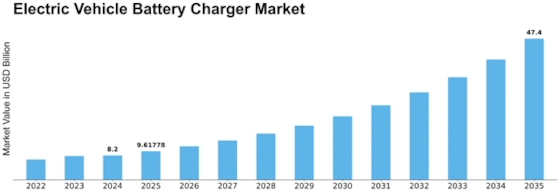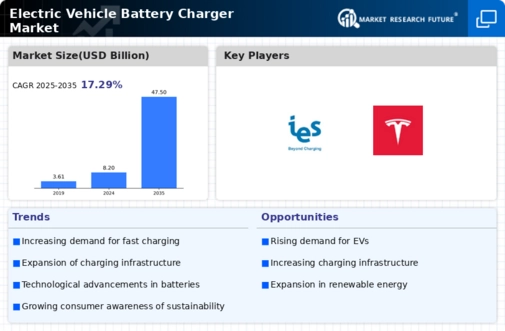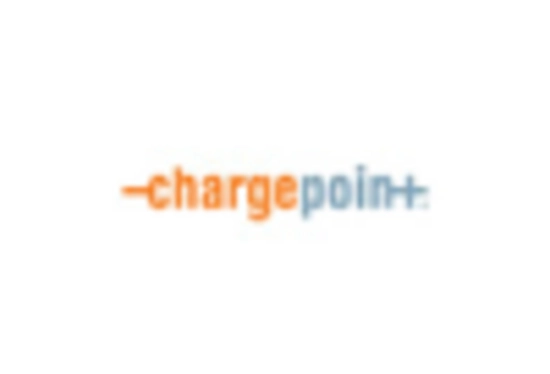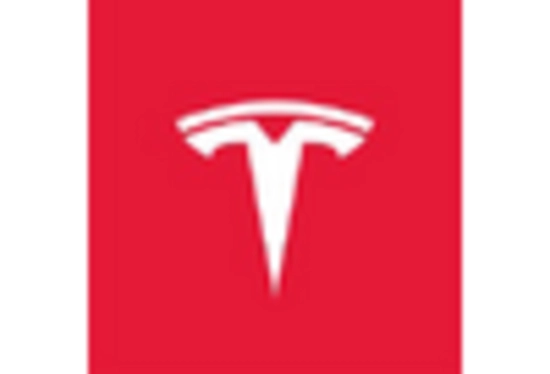-
Executive Summary
-
Scope of the Report
-
Market Definition
-
Scope of the Study
- Definition
- Research Objective
- Assumptions
- Limitations
- Primary Research
- Secondary Research
-
2.3.
-
Research Process
-
Market Size Estimation
-
Forecast Model
-
Market Landscape
-
Porter’s Five Forces Analysis
- Threat of New Entrants
- Bargaining Power of Buyers
- Threat of Substitutes
- Bargaining Power of Buyers
-
3.1.4.
-
Segment Rivalry
-
Value Chain/Supply
-
Chain Analysis
-
Market Dynamics
-
Introduction
-
Market Drivers
-
Market Restraints
-
Market Opportunities
-
Technology Trends
-
Global Electric Vehicle Battery Charger Market, by Electric Vehicle Type
-
Introduction
-
Battery Electric Vehicle
- Market Estimates
- Market Estimates & Forecast, by
-
& Forecast, 2023–2032
-
Region, 2023–2032
-
Plug-In Hybrid Electric Vehicle
- Market
- Market Estimates & Forecast,
-
Estimates & Forecast, 2023–2032
-
by Region, 2023–2032
-
Global Electric Vehicle Battery Charger Market,
-
by Level of Charging
-
Introduction
-
Level 1
- Market
- Market Estimates & Forecast,
-
Estimates & Forecast, 2023–2032
-
by Region, 2023–2032
-
Level 2
- Market Estimates &
- Market Estimates & Forecast, by Region,
-
Forecast, 2023–2032
-
Level 3
- Market Estimates & Forecast, 2023–2032
- Market Estimates & Forecast, by Region, 2023–2032
-
Global
-
Electric Vehicle Battery Charger Market, by Application
-
Introduction
-
Private
- Market Estimates & Forecast, 2023–2032
-
7.2.2.
-
Market Estimates & Forecast, by Region, 2023–2032
-
Public
- Market Estimates & Forecast, 2023–2032
- Market Estimates
-
& Forecast, by Region, 2023–2032
-
Global Electric Vehicle Battery
-
Charger Market, by Region
-
Introduction
-
North America
-
8.2.1.
-
Market Estimates & Forecast, by Country, 2023–2032
-
Estimates & Forecast, by Electric Vehicle Type, 2023–2032
-
8.2.3.
-
Market
-
Market Estimates & Forecast, by Level of Charging, 2023–2032
-
8.2.4.
-
Market Estimates & Forecast, by Application, 2023–2032
-
8.2.6.
-
Canada
-
8.3.5.
-
UK
-
8.3.6.
-
Germany
-
Type, 2023–2032
-
Charging, 2023–2032
-
by Electric Vehicle Type, 2023–2032
-
by Level of Charging, 2023–2032
-
by Application, 2023–2032
-
Estimates & Forecast, by Electric Vehicle Type, 2023–2032
-
8.3.9.2.
-
US
-
Market Estimates & Forecast, by Electric Vehicle Type, 2023–2032
-
Market Estimates & Forecast, by Level of Charging, 2023–2032
-
Market Estimates & Forecast, by Application, 2023–2032
-
Market Estimates & Forecast, by Electric Vehicle Type,
-
Market Estimates & Forecast, by Level of Charging,
-
Market Estimates & Forecast, by Application, 2023–2032
-
Europe
- Market Estimates & Forecast, by Country, 2023–2032
- Market Estimates & Forecast, by Electric Vehicle Type, 2023–2032
- Market Estimates & Forecast, by Level of Charging, 2023–2032
- Market Estimates & Forecast, by Application, 2023–2032
- France
- Italy
- Rest of Europe
-
Market Estimates & Forecast, by Level of Charging, 2023–2032
-
8.3.9.3.
-
Market Estimates & Forecast, by Application, 2023–2032
-
Asia-Pacific
- Market Estimates & Forecast, by Country, 2023–2032
-
8.4.2.
-
Market Estimates & Forecast, by Electric Vehicle Type, 2023–2032
-
8.4.3.
-
Market Estimates & Forecast, by Level of Charging, 2023–2032
-
8.4.4.
-
Market Estimates & Forecast, by Application, 2023–2032
-
8.4.6.
-
Japan
-
8.4.7.
-
India
-
8.4.8.
-
Rest of Asia-Pacific
-
Vehicle Type, 2023–2032
-
Level of Charging, 2023–2032
-
by Application, 2023–2032
-
& Forecast, by Region, 2023–2032
-
by Electric Vehicle Type, 2023–2032
-
by Level of Charging, 2023–2032
-
by Application, 2023–2032
-
8.5.5.1.
-
China
-
Market Estimates & Forecast, by Electric Vehicle Type, 2023–2032
-
Market Estimates & Forecast, by Level of Charging, 2023–2032
-
Market Estimates & Forecast, by Application, 2023–2032
-
Market Estimates & Forecast, by Electric Vehicle Type, 2023–2032
-
Market Estimates & Forecast, by Level of Charging, 2023–2032
-
Market Estimates & Forecast, by Application, 2023–2032
-
Market Estimates & Forecast, by Electric Vehicle Type, 2023–2032
-
Market Estimates & Forecast, by Level of Charging, 2023–2032
-
Market Estimates & Forecast, by Application, 2023–2032
-
Market Estimates & Forecast, by Electric
-
Market Estimates & Forecast, by
-
Market Estimates & Forecast,
-
Rest of the World
- Market Estimates
- Market Estimates & Forecast,
- Market Estimates & Forecast,
- Market Estimates & Forecast,
- Middle East & Africa
-
Market Estimates & Forecast, by Electric Vehicle Type, 2023–2032
-
8.5.5.2.
-
Market Estimates & Forecast, by Level of Charging, 2023–2032
-
8.5.5.3.
-
Market Estimates & Forecast, by Application, 2023–2032
-
America
-
Latin
-
Market Estimates & Forecast, by Electric Vehicle Type,
-
Market Estimates & Forecast, by Level of Charging,
-
Market Estimates & Forecast, by Application, 2023–2032
-
Competitive Landscape
-
Company Profile
-
CTEK Holding AB (Sweden)
- Company Overview
- Products/Services Offered
- Financial
- Key Developments
- Key Strategies
-
Overview
-
10.1.6.
-
Swot Analysis
-
Delphi Automotive LLP (Ireland)
- Company Overview
- Products/Services Offered
- Financial Overview
- Key Strategies
- Swot Analysis
- Company Overview
- Products/Services
- Financial Overview
- Key Developments
- Swot Analysis
-
10.2.4.
-
Key Developments
-
10.3.
-
Clore Automotive LLC (US)
-
Offered
-
10.3.5.
-
Key Strategies
-
Robert Bosch GmbH (Germany)
- Company Overview
- Products/Services Offered
- Key Developments
- Key Strategies
- Swot Analysis
-
10.4.3.
-
Financial Overview
-
Current Ways Inc. (US)
- Company
- Products/Services Offered
- Financial Overview
- Key Developments
- Key Strategies
- Swot Analysis
-
Overview
-
IES Synergy (France)
- Company Overview
- Products/Services
- Financial Overview
- Key Developments
- Swot Analysis
-
Offered
-
10.6.5.
-
Key Strategies
-
Meta Systems S.P.A (Italy)
- Company Overview
- Products/Services Offered
- Financial
- Key Developments
- Key Strategies
-
Overview
-
10.7.6.
-
Swot Analysis
-
LG Electronics (South Korea)
- Company Overview
- Products/Services Offered
- Financial Overview
- Key Strategies
- Swot Analysis
- Company Overview
- Products/Services
- Financial Overview
- Key Developments
- Swot Analysis
-
10.8.4.
-
Key Developments
-
10.9.
-
Ficosa Internacional SA (Spain)
-
Offered
-
10.9.5.
-
Key Strategies
-
Lear Corporation (US)
- Products/Services Offered
- Financial
- Key Developments
- Key Strategies
-
10.10.1.
-
Company Overview
-
Overview
-
10.10.6.
-
Swot Analysis
-
Baccus Global LLC (US)
- Company Overview
- Products/Services Offered
- Financial Overview
- Key Strategies
- Swot Analysis
- Company Overview
- Products/Services Offered
- Financial Overview
- Key Developments
- Key Strategies
- Swot Analysis
-
10.11.4.
-
Key Developments
-
10.12.
-
Tesla (US)
-
Schumacher Electric Corporation (US)
- Products/Services Offered
- Financial
- Key Developments
- Key Strategies
-
10.13.1.
-
Company Overview
-
Overview
-
10.13.6.
-
Swot Analysis
-
-
List of Tables
-
Global Electric Vehicle
-
Battery Charger Market, by Region, 2023–2032
-
North America:
-
Electric Vehicle Battery Charger Market, by Country, 2023–2032
-
Table
-
Europe: Electric Vehicle Battery Charger Market, by Country, 2023–2032
-
Asia-Pacific: Electric Vehicle Battery Charger Market, by Country, 2023–2032
-
RoW: Electric Vehicle Battery Charger Market, by Region, 2023–2032
-
Global Electric Vehicle Battery Charger Market, by Electric Vehicle
-
Type, by Region, 2023–2032
-
North America: Electric Vehicle Battery
-
Charger Market, by Electric Vehicle Type, by Country, 2023–2032
-
Table
-
Europe: Electric Vehicle Battery Charger Market, by Electric Vehicle Type, by
-
Country, 2023–2032
-
Asia-Pacific: Electric Vehicle Battery Charger
-
Market, by Electric Vehicle Type, by Country, 2023–2032
-
RoW:
-
Electric Vehicle Battery Charger Market, by Electric Vehicle Type, by Region, 2023–2032
-
Global Electric Vehicle Battery Charger Market, by Level of Charging,
-
by Region, 2023–2032
-
North America: Electric Vehicle Battery
-
Charger Market, by Level of Charging, by Country, 2023–2032
-
Table 13
-
Europe: Electric Vehicle Battery Charger Market, by Level of Charging, by Country,
-
Asia-Pacific: Electric Vehicle Battery Charger Market,
-
by Level of Charging, by Country, 2023–2032
-
RoW: Electric Vehicle
-
Battery Charger Market, by Level of Charging, by Region, 2023–2032
-
Table
-
Global Electric Vehicle Battery Charger Market, by Application, by Region, 2023–2032
-
North America: Electric Vehicle Battery Charger Market, by Application,
-
by Country, 2023–2032
-
Europe: Electric Vehicle Battery Charger
-
Market, by Application, by Country, 2023–2032
-
Asia-Pacific:
-
Electric Vehicle Battery Charger Market, by Application, by Country, 2023–2032
-
RoW: Electric Vehicle Battery Charger Market, by Application, by
-
Region, 2023–2032
-
Table 21
-
List of Figures
-
Figure
-
Research Process of MRFR
-
Top-Down and Bottom-Up Approach
-
Figure
-
Market Dynamics
-
Impact Analysis: Market Drivers
-
Impact
-
Analysis: Market Restraints
-
Porter''s Five Forces Analysis
-
Figure
-
Value Chain Analysis
-
Global Electric Vehicle Battery Charger Market
-
Share, by Electric Vehicle Type, 2023 (%)
-
Global Electric Vehicle
-
Battery Charger Market, by Electric Vehicle Type, 2023–2032 (USD Million)
-
Global Electric Vehicle Battery Charger Market Share, by Level of Charging,
-
Global Electric Vehicle Battery Charger Market, by Level
-
of Charging, 2023–2032 (USD Million)
-
Global Electric Vehicle
-
Battery Charger Market Share, by Application, 2023 (%)
-
Global Electric
-
Vehicle Battery Charger Market, by Application, 2023–2032 (USD Million)
-
Figure 14
-
Global Electric Vehicle Battery Charger Market Share
-
(%), by Region, 2023
-
Global Electric Vehicle Battery Charger Market,
-
by Region, 2023–2032 (USD Million)
-
North America: Electric
-
Vehicle Battery Charger Market Share (%), 2023
-
North America: Electric
-
Vehicle Battery Charger Market, by Country, 2023–2032 (USD Million)
-
Figure
-
Europe: Electric Vehicle Battery Charger Market Share (%), 2023
-
Figure 20
-
Europe: Electric Vehicle Battery Charger Market, by Country, 2023–2032 (USD
-
Million)
-
Asia-Pacific: Electric Vehicle Battery Charger Market Share
-
(%), 2023
-
Asia-Pacific: Electric Vehicle Battery Charger Market,
-
by Country, 2023–2032 (USD Million)
-
Rest of the World: Electric
-
Vehicle Battery Charger Market Share (%), 2023
-
Rest of the World:
-
Electric Vehicle Battery Charger Market, by Region, 2023–2032 (USD Million)










Leave a Comment